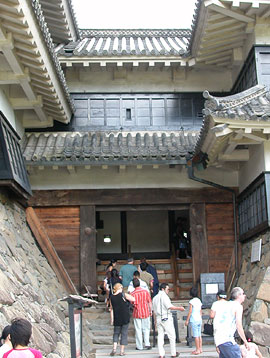|
||
 |
||
2@Also called *tamon ½·, *nagaya ·®. A long connecting gallery or enclosed connecting corridor in an Edo period castle. Built along the top of a stone wall or embankment, the watariyagura links two towers, a tower and a donjon, or a large donjon with a small one.
3@A structure used in a provision medieval fortification. A long walkway was constructed of wooden planks, parallel to the battle line. Soldiers would fire arrows from this walkway.

1j@Matsumotojou
¼{é (Nagano)
@
(C)2001 Japanese Architecture and Art Net Users System.@No reproduction or republication without written permission.
fÚÌeLXgEÊ^ECXgÈÇASÄÌRec̳f¡»E]ÚðֶܷB

